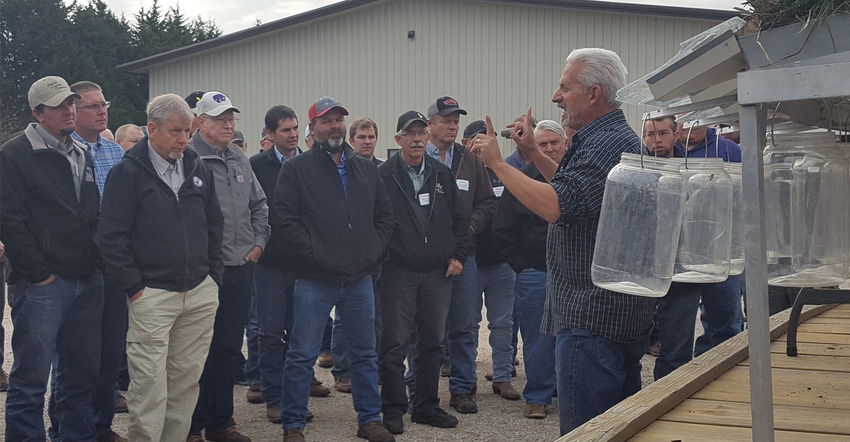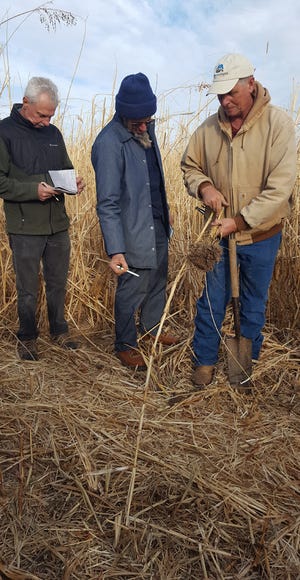
Editor’s note: This article is the first of a series of articles about General Mills’ pilot project to advance the adoption of regenerative ag. Kansas Farmer will visit with some of the 24 farmers participating in the project to share what the researchers and farmers are learning.
General Mills is bringing a three-year pilot program to the Cheney Reservoir watershed as part of its commitment to advance the adoption of regenerative ag practices, which it believes can have a long-term, positive impact on soil health, water quality, biodiversity — and farmer profitability.
The company will work with 24 wheat growers in and around the 650,000-acre watershed. “Central and western Kansas are critical sourcing regions for us,” says Steven Rosenzweig a soil scientist with General Mills who is one of the architects of the pilot program and is leading the research side of the effort.
Rosenzweig says General Mills is working with the regenerative consulting firm, Understanding Ag, to provide agronomic coaching to producers who are taking part in the effort.
Soil Health Academy
Working with the Kansas Department of Health and Environment, the company set up the Soil Health Academy, a series of workshops for producers to learn more about the program. “We got such an outpouring of interest that we had to cut off enrollment,” he says. “It was through that effort that we connected with the Cheney Watershed folks and learned about their enthusiasm for this approach, and about the good work that they already have been doing.”
Rosenzweig says one of project’s major goals will be collecting data that quantifies the benefits of regenerative agricultural practices such as using no-till, integrating cover crops, increasing plant diversity and adding livestock to the equation.
“We have evidence that these individual practices make soil healthier, capable of absorbing and holding more water, better able to withstand extreme weather events such as heavy rainfall or drought,” he says. “We also have evidence that these practices enable the soil to sequester more carbon from the atmosphere, and that the gain in organic matter supports yield and resilience. We don’t have as much data that quantifies the impacts all of these practices together in a regenerative system, especially not on working farms.”
 BETTER ROOTS: Agronomist Shane New (right) shows the density of root mass in a plant pulled from a demonstration field during a Soil Health Academy in Yoder. Also shown are farmers James Doyle (left) and Harry Borntrager. Photo by Howard Miller
BETTER ROOTS: Agronomist Shane New (right) shows the density of root mass in a plant pulled from a demonstration field during a Soil Health Academy in Yoder. Also shown are farmers James Doyle (left) and Harry Borntrager. Photo by Howard Miller

He says teams will measure the results from the farms participating, looking at increases in carbon sequestration, water infiltration, and impacts on insects, birds and wildlife. Also, the company will work with the Ecosystems Services Market Consortium, which includes a collection of agriculture and food companies, including General Mills, as well as nonprofits working in agriculture to establish a voluntary market for payments to farmers for ecosystem services, such as carbon sequestration and water quality improvement.
The pilot effort kicked off with the Soil Health Academy, and the 24 participants were chosen from 150 producers who enrolled in those. Soil sampling on more than 70 fields is scheduled for the last two weeks of March and the first two weeks of April, including deep soil carbon measurements to establish the starting point for those fields.
Understanding Ag consultants
Consultants with Understanding Ag have already met with producers chosen for the pilot program to provide support in using Agrible software that has been chosen for keeping records of data collected during the project.
“The Agrible software has a lot of depth and can support records well beyond simple bookkeeping,” says Harper County farmer Jim Robb, one of the participants in the program. “It keeps track of soil types, weather, crop production, grain marketing, chemical use, fertility, insect pressure, disease pressure and more. There is a way to support the numerical data with producer notes. I was a bit overwhelmed at first, but I think this software will prove a true gold mine of data for analysis from many different angles and viewpoints.”
Robb says consultants with Understanding Ag have already contacted him about plans to pull soil samples to 48 inches deep from fields of his choice “They have offered to have soil specialists available online, over the phone or on-site visit to the selected field,” he says. “One of their hopes is to establish the amount of carbon credits we have potentially stored. Since this is my 20th year of 100% no-till, if credits are determined, it is my understanding that I may be credited with two or more years of credits from the past.”
Robb says he was told he will plan his own cropping system, including tests plots and the consultants expect to include at least one cover crop test plot within the pilot’s three-year span. “I assume they will review my plans, and potentially offer ideas and guidelines that may be helpful to me.”
Consortium goal
Rosenzweig says the goal of the Ecosystems Services Market Consortium is to establish a voluntary market that incentivizes farmers tor the various societal benefits of regenerative agriculture, including carbon sequestration, reduced water use, water quality improvements and reductions in greenhouse gas emissions.
“General Mills has a goal of reducing greenhouse gas emissions by 28% across its full value chain by 2025,” Rosenzweig says. “More than half of our carbon footprint comes from agriculture. This gives us an opportunity to measure reductions in our emissions, both by greater carbon sequestration and by reduced emissions from agriculture. As part of the pilot, participants who opt into data tracking and field measurements will be some of the first in the country to be paid for sequestering carbon or improving water quality through this market.”
The Ecosystem Services Market has a goal of launching the market nationally by 2022. Markets like these may help General Mills reach its goal of advancing regenerative practices on 1 million acres of farmland by 2030.
About the Author(s)
You May Also Like






